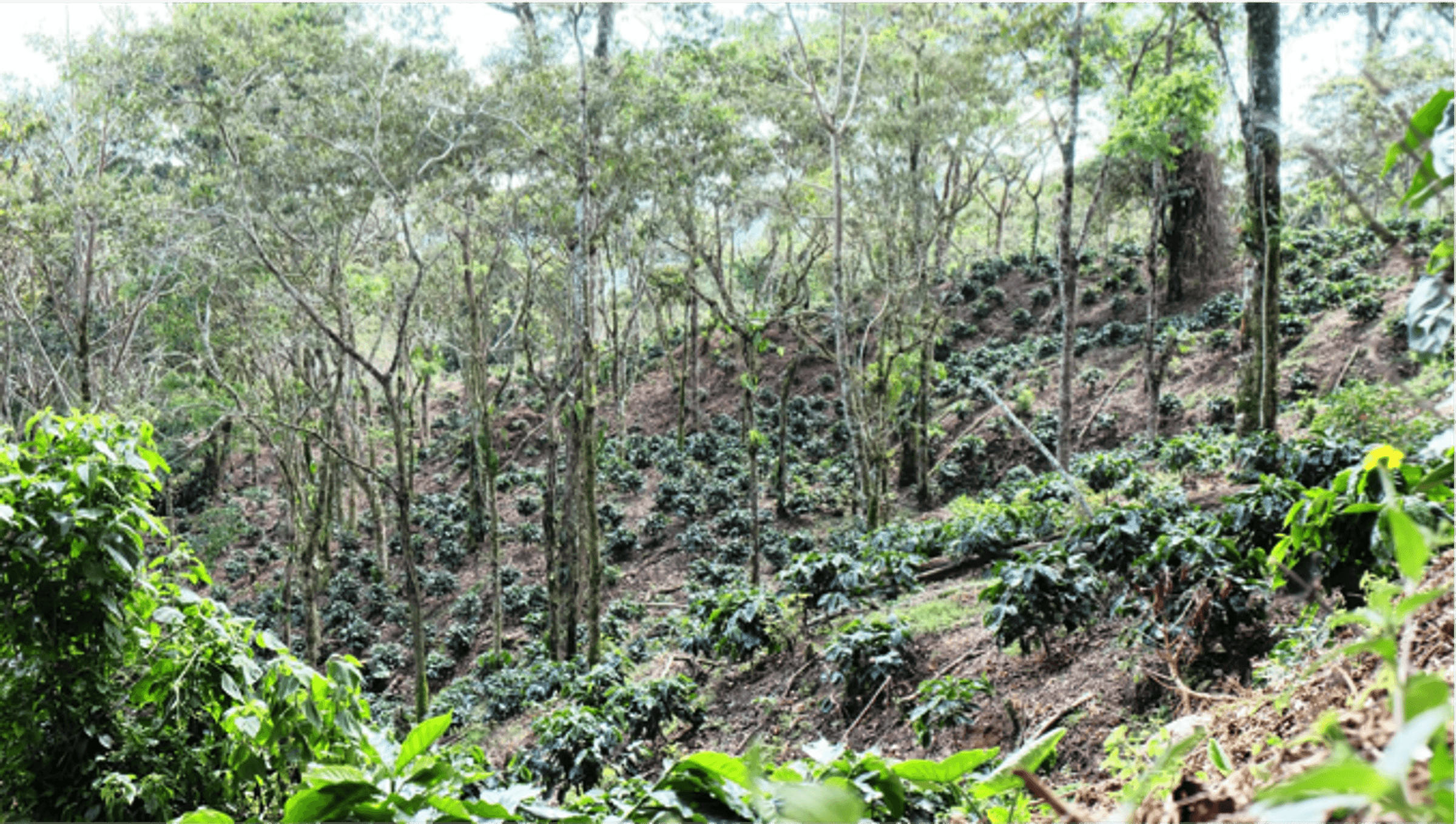The correlation of shade and rust
Jacques Avelino’s study suggests that there are types of shade that reduce the intensity of coffee leaf rust infections.
Many existing approaches for controlling coffee leaf rust are one-sided: Use rust-resistant varieties, or spray with as much fungicide as you can afford. But it is increasingly evident that we need to open new fronts in the fight against coffee leaf rust. To do so, we need better science on how rust interacts with coffee microclimates, different management practices, and the coffee plant itself. Expert Jacques Avelino published a fascinating study in 2017, adding an essential understanding of how coffee leaf rust interacts with coffee and pointing to insights into how it can be controlled.

Some types of shade may actually make coffee leaf rust worse, despite being an important practice for coffee growers amid rising global temperatures. Credit: Bram deHoog
In general, there is more coffee leaf rust under shade than on plants grown in full sun. However, shade-grown coffee is typically better able to defend itself against a rust infection because shaded trees are not as stressed as full-sun trees.
And clearly shade is necessary to cope with climate change—abandoning shade entirely is not a viable approach to managing coffee leaf rust.
Avelino conducted a study for World Coffee Research at CATIE in Turrialba, Costa Rica, to determine whether there are approaches to reduce the negative effects of shade without diminishing the positive effects. The team concluded that shade tree species that increase the so-called “washout” of coffee leaf rust spores (e.g., the gentle washing of spores off leaves to the ground, without spreading the spores) would help to reduce the intensity of coffee leaf rust infections.
This points to an intriguing conclusion: That some types of shade tree may be better than others for controlling coffee leaf rust outbreaks. Small shade trees with small, flexible, lobbed leaves, or easily manageable shade trees that enable high shade cover in the dry season and low shade cover during the rainy season, are of interest for that purpose.